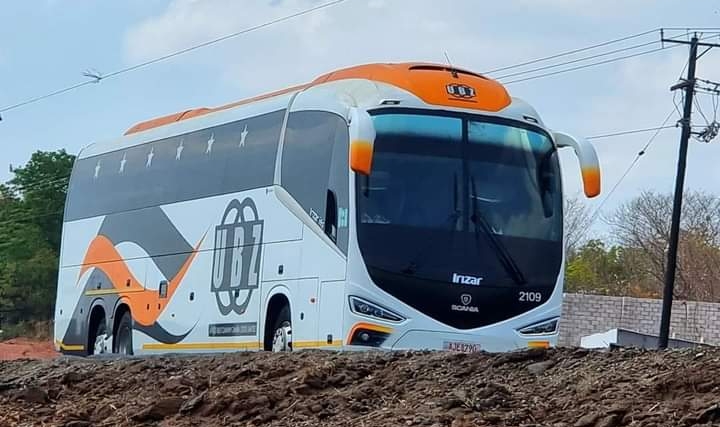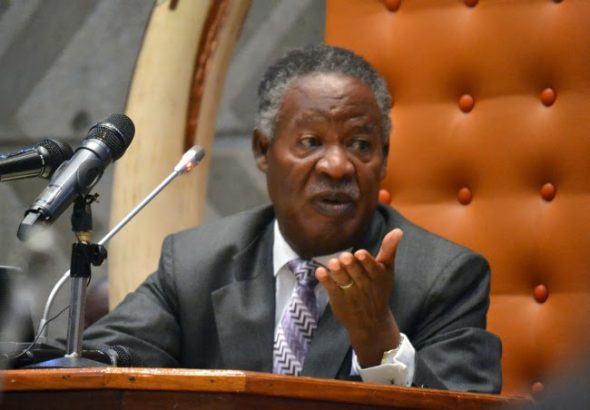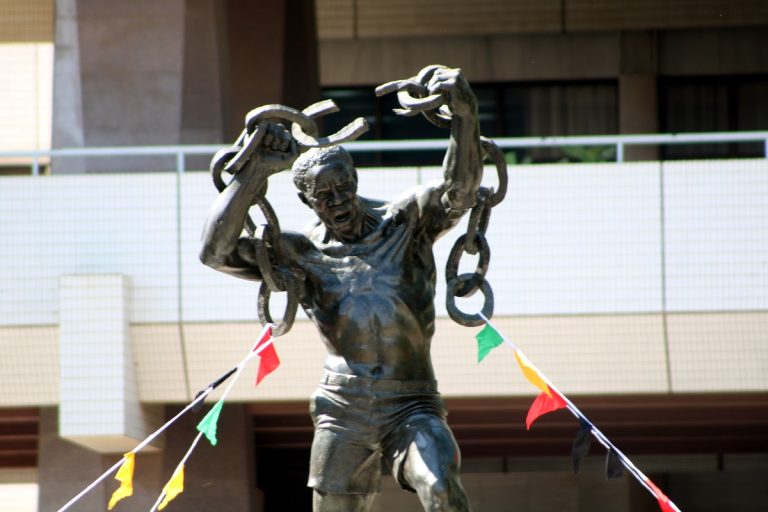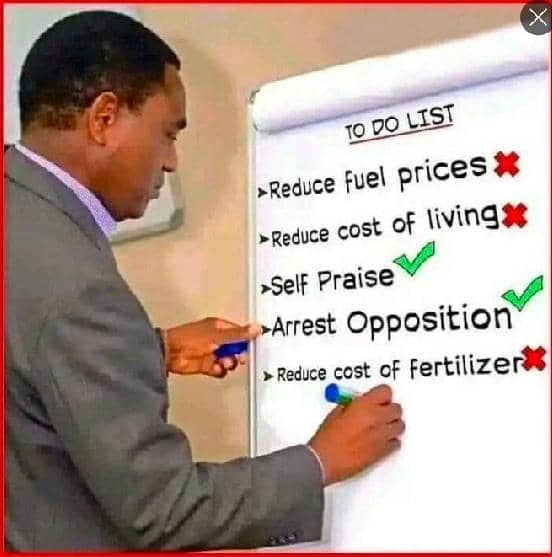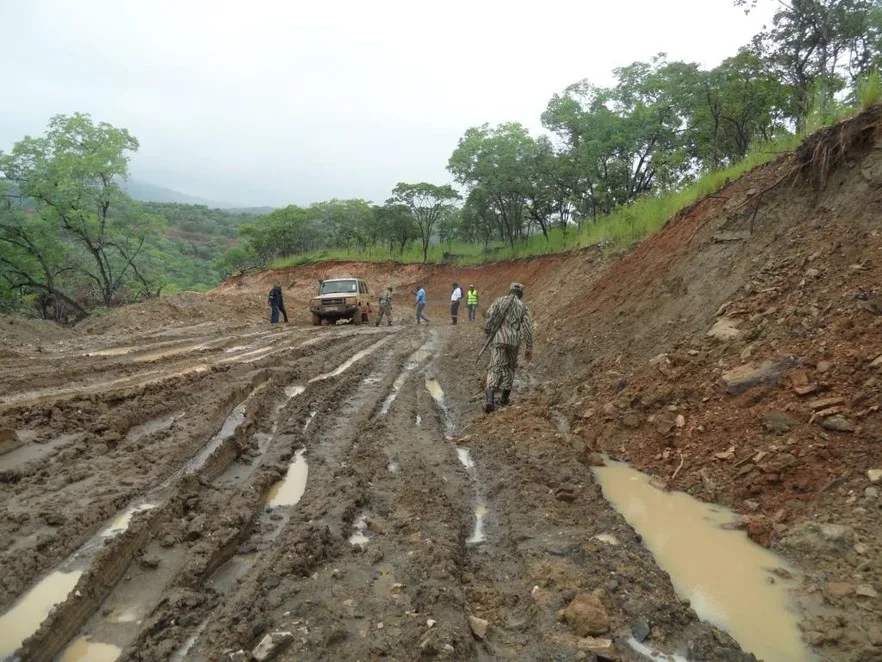
Work has begun clearing vegetation for a mine in the Lower Zambezi National Park in Zambia.
Hichilema, as opposition leader, made his objection to mining in the national park clear on social media, in 2014 and again in 2019.
By Charles Mafa | GroundUp.
Lusaka, May 22 – Stephen Malenga, the council secretary for the Luangwa District where the mine is located, confirmed that work, including on roads, has started.
“In April, I sent a team responsible for revenue collection (at the council) to Lower Zambezi to establish facts about the mine after hearing reports that it was operational,” said Malenga.
“What they found was that the roads are being worked on and office blocks were being constructed but they were not completed. An airstrip has also been constructed at the mine.”
◾A decade-long fight turns into a sinkhole
The proposed mine is an open-pit mine which involves the excavation of a large open hole or a series of pits. These are gradually deepened and expanded to extract the desired mineral – in this case, copper.
Open-pit mining typically involves the use of heavy equipment, such as bulldozers, excavators and trucks to remove overlying material and expose the mineral deposit. Storage facilities are used to store the waste materials generated from mining operations, called tailings. These waste materials, including dangerous chemicals, are stored in dams constructed near mining sites. Any leaks or faults would threaten the entire ecosystem.
In 2011, when the mine first applied for a licence to operate in the area, activists warned about the threat of permanently damaging a significant portion of the park. Although it is not clear how big the mine area will be, the Environmental Impact Assessment explains how the main construction phase activities include road construction, site clearance, earthworks, open pit excavation and construction of the concentrator plant. Other work includes building a tailings storage facility, water storage tanks and fencing.
When the ZEMA rejected the EIS in 2012, the environmental agency’s technical experts flagged degradation of the escarpment habitat, wilderness value, and river pollution as key concerns on a long list of potential adverse impacts.
ZEMA stated the mine would “destroy the landscape of the park”. It also warned that the proposed tailings storage facilities were “risky” and the “chances of failure are high”.
Two years after ZEMA rejected the mine’s EIS, Zambia’s then Minister of Lands, Harry Kalaba, approved the project. It was stopped by a court injunction, and Hichilema, who was in the opposition at the time, made his objection to mining in the national park clear on social media, in 2014 and again in 2019.
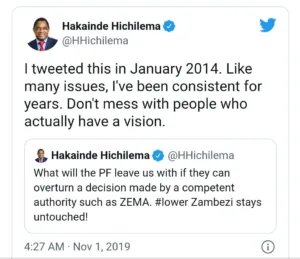
Also Read: Hichilema says polygamy among Tongas stems from lack of education.
In 2021, ZEMA changed its mind and approved the mining company’s EIS it had rejected in 2012. The EIS expired in 2021. A coalition of environmental activists, the Conservation Advocates Zambia (CAZ), approached the courts to reverse ZEMA’s approval but Zambia’s Court of Appeal dismissed the case in February 2021. In addition to the Kangaluwi open-pit site, the EIS outlines how operations are likely to be undertaken at three satellite sites – Kalulu, Chisawa and Imboo.
CAZ also asked ZEMA to review its decision. After getting no response, they applied to Zambia’s High Court, asking for a judicial review of ZEMA’s decision to approve the expired EIS which it had initially rejected. The hearing was adjourned twice before grinding to a halt on 30 March this year when ZEMA said it had “no authority” to review its own decision.
On 27 April, CAZ sent a plea to the Minister of Green Economy and Environment, Collins Nzovu, to stop all activities related to the mining operation. He has not yet responded.
Aside from unanswered questions about whether there was any political influence exerted to approve the project, the events have also raised questions about Hichilema’s “new dawn government’s” commitment to protect and conserve the country’s treasured forests and national parks.
◾Mine ownership.
The mine is owned by Zambian registered Mwembeshi Resources Limited. Mwembeshi Resources (Bermuda) is the largest shareholder and is owned by a Chinese conglomerate (the majority owned by Hu Kaijun and Chinese government stakeholders). Other companies that hold shares include Metex Resources Limited, and Amazon Associates Limited.
There are also individual shareholders in Mwembeshi Resources, including Stephen Mulenga, Willie Rutherlain Sweta, Hyden Hara, Pengani Yangailo, and an Austrian, Marinko Vidovic, according to the Patents and Companies Registration Agency records.
◾Weak legal framework.
While the Mines and Minerals Development Act (2008) and the Zambia Wildlife Act (1998) allow for mining inside national parks, there is no policy or legal framework to guide implementation, monitoring and mitigation of impacts such as ensuring full site rehabilitation as outlined in the Mines and Mineral Resources Development Act.
Section 80 of this Act prescribes “the rehabilitation, levelling, re-grassing, reforesting or contouring of such part of the land over which the right or licence has effect as may have been damaged or adversely affected by exploration operations, mining operations or mineral processing operations; and the filling in, sealing or fencing of excavations, shafts and tunnels”.
Credit: This story was produced by MakanDay Centre for Investigative Journalism and syndicated by the IJ Hub on behalf of its member centre network in Southern Africa. It is co-published with GroundUp.
You can now follow Woodpecker’s Digest on Twitter and Facebook!
©2022 Woodpecker’s Digest Inc.
Putting news into perspective

